Jethro and Moses in Midian
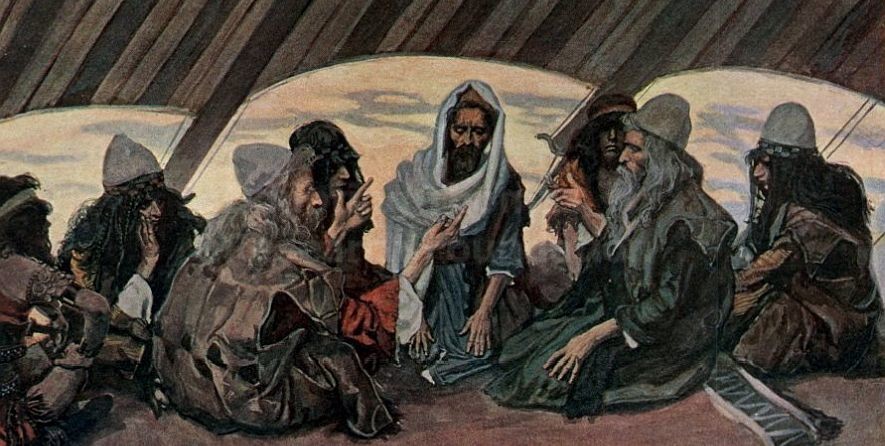
The book of Exodus reports that Moses fled Egypt to Midian, which would be mostly or entirely the northwest portion of modern day Saudi Arabia and southern Jordan, with some arguing that it could include the southern part of Egypt's Sinai Peninsula. Jethro, Moses' father-in-law, was the high priest of Midian.
Midian most certainly encompassed the territory we believe contains Biblical Mount Sinai. According to Biblical Scholar Frank Moore Cross, even the oldest of Hebrew hymns and records indicate that the Jewish people went into the land of Midian after fleeing Egypt. These writings include Scriptures such as Judges 4-5, Deuteronomy 33:2-29, and Habakkuk 3:3-7.
In an interview with the Bible Review in August 1992, he stated:
I would argue that these archaic songs that locate Yahweh's movements in the southeast—in Edom/Seir/Teman/Midian/Cushan—are our most reliable evidence for locating Sinai/Horeb, the mountain of God. The search for origins, and reconstruction of history from material that arises in oral tradition, is always a precarious task. The singers of narrative poems—I speak of them as Epic sources—follow certain traditional patterns that include mythological elements. They do not contain what we would call history in the modern sense of that term. We are dealing with epic, which does not fit easily into either the genres of fiction or of history.
Dr. Cross did not specify which mountain he believed was Mount Sinai, but he did clearly favor an Arabian location, which would be ancient Midian.
In his study of ancient Hebraic poetry in the Old Testament, he also finds that the Scriptures point to an Arabian location for Mount Sinai.
The archaic hymns of Israel are of one voice. Yahweh came from Teman, Mt. Paran, Midian and Cushan (the song of Habakkuk); the song of Deborah sings of Yahweh going from Seir, marching forth from Edom; the Blessing of Moses states that Yahweh came from Sinai, beamed forth from Seir, shone from Mount Paran. These geographical designations cannot be moved west into the peninsula now called Sinai.
Frank Moore Cross, From Epic to Canon, (John Hopkins University Press, 1998), 66.
The descriptions given to us do not describe God's presence zig-zagging across the map, but rather a nearly straight line from Mount Sinai northward to Jerusalem. Indeed, Jerusalem is almost directly north of Jabal Maqla.
Josephus's Account
In Josephus' Antiquities of the Jews, he recounts that Moses came to Midian after fleeing Egypt, and fought off other shepherds who took more than their share of water from Jethro's well. For his noble deed, Moses was adopted into Jethro's family, and Jethro gave Moses one of his daughters in marriage.
Josephus then writes that Moses took to herding Jethro's flocks in Midian, and did so in close proximity to Mount Sinai, where he encounters God at the Burning Bush.
NOW Moses, when he had obtained the favor of Jethro, for that was one of the names of Raguel, staid there and fed his flock; but some time afterward, taking his station at the mountain called Sinai, he drove his flocks thither to feed them. Now this is the highest of all the mountains thereabout, and the best for pasturage, the herbage being there good; and it had not been before fed upon, because of the opinion men had that God dwelt there, the shepherds not daring to ascend up to it; and here it was that a wonderful prodigy happened to Moses; for a fire fed upon a thorn bush, yet did the green leaves and the flowers continue untouched, and the fire did not at all consume the fruit branches, although the flame was great and fierce.
Several chapters later in the Antiquities, Josephus states that Moses came to Midian after three months' travel from Egypt. In that time period, the Israelites would certainly be able to make the trip from Egypt to Sinai.
And going gradually on [after the battle at Rephidim], he came to Mount Sinai, in three months' time after they were removed out of Egypt; at which mountain, as we have before related, the vision of the bush, and the other wonderful appearances, had happened.
When Moses comes back to Sinai after leading the Israelites out of Egypt, based on Josephus' account, and Biblical accounts, one may reasonably believe that Mount Sinai was in Midian and that Midian was Jethro's land. However, there has been some debate over this interpretation, with the objection being that Jethro lived some distance away from Mount Sinai.
Was Jethro's Land Really In Midian, or Somewhere Else?
It is sometimes argued that Exodus 18:27 indicates that Jethro's home was not in Midian because it states that he returned to his home after meeting with Moses. However, another (and arguably more accurate) source indicates that Jethro returned to his specific home within Midian.
In Charles Whittaker’s 2003 dissertation, which discussed the idea of Mount Sinai being in Saudi Arabia, he examined the linguistic components of this verse and concluded that the words do not indicate a separate region. The Hebrew word “eretz” is more accurately translated as one’s own district or plot of land, such as a tract of land that a person owns.[i] This particular form of the word is used over 30 times in the Old Testament and, in each case, it refers to a specific tract of land owned by a person, not a broader regional or political designation.
While Moses was in Midian, Jethro met him in the wilderness near Mount Sinai. Jethro then returned to his own tract of land within Midian, according to this interpretation. It is reasonable to conclude that Mount Sinai was therefore in Midian, making northwestern Saudi Arabia the likeliest location of Jethro's home and Mount Sinai.
Al-Bad: The Land of Jethro Near Mount Sinai
There is a long tradition that the land of Jethro was in and around an ancient city named Madyan (also spelled as Madian), which was essentially the capital of Midian. These traditions identify the modern city of al-Bad, also known as al-Bid, as the location of that city. There is also a very strong tradition at al-Bad that it was the land of Jethro and Moses lived there.
A scholarly study by Dr. Allen Kerkeslager concluded that the oldest and most credible sources and traditions equate the city of al-Bad (also known as al-Bid) with the city of Madyan, the capital of Midian. His study found that these sources report that Mount Sinai/Horeb is near this city, making Jabal al-Lawz/Jabal Maqla the strongest candidate by far.[iii]
The tradition that Mount Sinai is near the city of Madyan, current day Al-Bad, dates back as late as 250 B.C. and is referred to in Septuagint Old Testament Old Greek (LXX/OG), the earliest Greek translation of the Old Testament.
Dr. Kerkeslager writes:
The Jewish tradition of locating Mt. Sinai in northwestern Arabia near the city of Madyan persisted long after competing Christian traditions of pilgrimage to the southern Sinai Peninsula developed…
No other site identified with Mt. Sinai in modern scholarship can claim to possess a tradition of such antiquity or of such indisputably Jewish origin. If one seeks the ‘Mt. Sinai of Jewish tradition,’ one will henceforth have to seek a mountain near Al-Bad.
In 2002, the Saudi government commissioned six archaeologists to briefly examine the Jabal al-Maqla area and respond to the tradition linking northwestern Arabia to Moses, Jethro, and the Israelites. The publication, titled Al-Bid' History and Archaeology, rejected the theory.
However, the authors acknowledge that credible historians identified this area as the place where Moses went. They also give credit to the local tradition in al-Bad, which they concede is "unbroken" through the generations and very strong among the local population.
One of the archaeologists, Dr. Abdul Rahman al-Tayyib al-Ansari, oddly ridicules “those who try to distort our history and culture by false and fictitious accounts” after substantiating the premise behind the theory.
Dr. al-Ansari writes:
“The civilization in the northwest of Saudi Arabia began before prehistory, the area witnessed the civilizations of ‘Aad and Thamud at about the 3rd millennium BC; then appeared the civilization of Midian, it was the civilization mentioned in the Holy Quran which tells us the story of Prophet Shu’iab, who lived in culture in which the powerful destroyed and command the poor.”[ii]
Dr. al-Ansari confirms that northwest Saudi Arabia corresponds to Midian and that Islamic scripture teaches that the Prophet Shu'aib lived in the city of Madyan. According to the Quran, Shu'aib was very close to Moses, thus substantiating the theory that Moses was in this area. It is commonly believed that Shu'aib and Jethro refer to the same person due to the strong similarities in their stories. It is not uncommon for people from this region to have multiple names by which they were referred.
In the book, the researchers explicitly reject the evidence of Midianite civilization on page 81:
There is a controversy regarding the Prehistoric settlement in al-Bid area of what is called "Midian." The archaeological evidence does not support the possibility of a large settlement in or around al-Bid. All the evidence either dates back to the Neolithic period or the more recent Nabataean/Roman period.
This conclusion is puzzling given the wealth of evidence at al-Bad. In 1981, archaeologist M.L. Ingraham wrote in Atlal: The Journal of Saudi Arabian Archaeology that he found a great deal of Midianite pottery in and around the al-Bad area, which substantiates the theory that this region was ancient Midian.
Why would this team of Saudi archaeologists effectively deny any connection to Midian in their research in 2002? A suspicion of ours is that the Saudi government is doing its part to minimize attention on this region.
As one former Jihadist contact of ours stated during our documentary film, the Islamist fighters all knew that Mount Sinai was in Saudi Arabia and that the Saudi government was hiding it using police and fences. In Islamic law, if a site is used for idolatry, even a holy site, it must be destroyed.
This strange omission of the evidence of Midianite civilization at al-Bad is puzzling to us, unless the reason is to minimize the possibility of idolatry.
Not all sources necessarily identify ancient Midian as modern-day al-Bad, though. Rabbi Alexander Hool, in chapter five of his book Searching for Sinai: The Location of Revelation, states that several ancient Arabian sources place Midian much further south.
According to Zejd al-Balhi (850-943 A.D.), an Islamic scholar of geography, Midian was located by the Kolzum Sea (Red Sea) opposite Tabuk at a distance of about six days march. al-Balhi reportedly inspected a well at this location further south on the Arabian Peninsula and believed that Moses drew water for Jethro's daughters here.
Midian may well have extended this far south, though there is a fairly strong consensus among both contemporary scholars and many ancient sources that the capital of Midian was at modern-day al-Bad.
Taking Jethro's Flocks to Mount Sinai
While living in Midian and tending to Jethro's flocks, Moses encountered God at Mount Sinai. Josephus wrote in Book II, chapter 12 of the Antiquities of the Jews that no one dared ascend Mount Sinai, as they feared God resided upon it.
NOW Moses, when he had obtained the favor of Jethro, for that was one of the names of Raguel, staid there and fed his flock; but some time afterward, taking his station at the mountain called Sinai, he drove his flocks thither to feed them. Now this is the highest of all the mountains thereabout, and the best for pasturage, the herbage being there good; and it had not been before fed upon, because of the opinion men had that God dwelt there, the shepherds not daring to ascend up to it...
To get to Mount Sinai, Moses took the flocks away from the inhabited part of Midian (al-Bad) and into the wilderness. This is a key point in identifying Mount Sinai.
Where did Moses take the flocks? The traditional location in the southern Sinai Peninsula would have required Moses to take the flocks completely around the Gulf of Aqaba and all the way down to the southern tip at St. Catherine's. Would a Midianite shepherd have traveled that far east for grazing and water?
Our research suggests the answer is no. There are several reasons that we reject the traditional location based on this particular premise.
Our research indicates that the Egyptians controlled the Sinai Peninsula during the time of the Exodus, with copper and turquoise mines and troops garrisons dotting the region. The accounts from Josephus and the book of Exodus do not indicate that Moses went out of Midianite territory when watching over Jethro's flocks, but rather that Moses was in a wilderness area controlled by Midian.
Highlighting this point, the Bible explicitly states that God spoke with Moses in Midian before sending him back to Egypt. Exodus 4:18-19 reads:
Moses went back to Jethro his father-in-law and said to him, "Please let me go back to my brothers in Egypt to see whether they are still alive." And Jethro said to Moses, "Go in peace." And the LORD said to Moses IN MIDIAN, "Go back to Egypt, for all the men who were seeking your life are dead."
(All-CAPS ours for emphasis)
These verses would seem to clearly indicate that the Burning Bush experience took place in the region of Midian and not in the Sinai Peninsula. This would also mean that Mount Horeb, where this event occurred, would be within that same domain.
Rabbi Alexander Hool, author of Searching for Sinai: The Location of Revelation, states in chapter 5 that in the land of Midian, Moses would have had hundreds of kilometers of territory for Jethro's flocks to graze upon. Moses, therefore, would not have had any reason to travel to the Sinai Peninsula.
Why have many believed that Moses went to the Peninsula from the other side of the Gulf? One explanation is that there has been a translation issue with a particular word in Exodus 3:1, and that Hebrew word is 'achar.
This word has been interpreted as "west side" in several translations, such as the Revised Standard Version and the New American Standard Bible. In some cases, 'achar may mean west side, but it appears to be more accurately mean "behind, to the rear of," according to the Dictionary of Classical Hebrew.
Dr. Colin Humphreys states in his book The Miracles of Exodus that it appears the translators were so convinced that Mount Sinai had to be west of Midian that they interpreted 'achar to mean "west side." However, it makes more sense that Moses went east into the wilderness, not west.
In his chapter on the Burning Bush, Humphreys states:
"Far side" with respect to what? There are various possibilities. Moses had traveled east to come from Egypt to Midian. Hence the "far side" viewed from where Moses had come from would be farther east, that is, farther east from the coastal plains of Midian. An alternative explanation is to recognize that Moses was probably living at ancient Madian. On the west side of Moses was the Gulf of Aqaba; on the east side was the desert. If Moses led his flock to the far side of the desert, then it seems clear that he must have gone east.
Jabal Maqla lies to the east of ancient Midian, which fits with Dr. Humphreys' assertion. He does, however, place Mount Sinai further to the southeast at Hala-'l Badr. Nonetheless, we believe that his assessment makes clear that Mount Sinai was within Midian proper, and not on the Sinai Peninsula.
The Well of Moses
According to the book of Exodus, Moses saw an Egyptian beating an Israelite slave. He sneaked up on the Egyptian, killed him, and buried the body in the sand. His attempt to cover-up his crime failed and the Pharoah's government learned of what he had done. Moses then fled Egypt and arrived in Midian.
Moses may have taken an ancient trade route to get to Midian from Egypt. Dr. Colin Humphreys writes in The Miracles of the Exodus: A Scientist's Discovery of the Extraordinary Natural Causes of the Biblical Stories that there was an ancient trade route running from Egypt to the northern head of the Gulf of Aqaba, then turned south along that route to arrive at Midian (51).
What was the distance from Egypt to Midian? We don't know for sure an exact mileage, and ancient peoples did not have maps in this time as we do now. Rather, as Dr. Humphreys notes, distances were measured by days traveled. Several Arabian texts state that Moses' journey from Egypt to Midian was nine nights' encampment.
Humphreys mentions that in Book of Countries, Arab geographer al-Ya'qubi wrote in 1210 A.D. that from the northern tip of the Gulf of Suez to the head of the Gulf of Aqaba, there were six encampments along this route. This route was approximately 150 miles long. At a rate of about three miles per hour, and a total daily mileage of about 25, that's about six days (or encampments) to reach the opposite Gulf.
From the head of Aqaba, at modern-day Eilat, Moses would then have turned south. Czech explorer Alois Musil reported in his book The Northern Hegaz that from this point to the ancient city of Midian, it would have been about three days' encampment.
The distance of the west-to-east and north-to-south routes to the modern city of Al-Bad combine to make a nine-day journey along the trade routes, just as the ancient Arabic sources claimed.
In Midian, Moses came to the assistance of Jethro’s seven daughters when they were going to a local well for water and were being harassed by local shepherds. After driving them off, he drew water from the well for the women and watered their flock. Moses then met Jethro and later married one of his daughters named Zipporah.
In Al-Bad and near other Midianite ruins, there is an ancient well that is fenced in as an archaeological site. It is believed throughout the Muslim world that this is the Well of Moses where Moses met Jethro's daughters in Midian. In fact, if you visit this site, you are likely to come across Muslim tourists excitedly visiting it.
Dr. Kerkeslager writes in his groundbreaking study:
“Islamic sources from at least as early as ca. 900 state that the city of Madyan [Al-Bad] contained the well from which Moses watered the flocks of Shuy’ab [Jethro]. These traditions seem to have persisted with unbroken continuity into the early modern period. Associated with these traditions is a persistent Islamic tradition locating Mt. Sinai near Madyan.”[iv]

Even one of the Saudi archaeologists who contributed to the 2002 rebuttal acknowledged that trusted Islamic and Arab historical sources identified the site as the Well of Moses. One early Arabic biographer is quoted as saying: “[A]t the coast of the Qulzum Sea [the Gulf of Aqaba], lies the city of Midian, which is larger than Tabuk. Inside the town was the well from which Moses (Peace be upon him) extracted water for the livestock of Shu’aib [Jethro].”
Locals refer to this site as the Well of Moses and have done so for many generations. The Saudi archaeological study of the region found:
Magharat al-Bid’ [the well of al-Bad] had always been a site of importance and was renovated and restored by Muslim rulers and governors, during all periods of Islamic history. The reason for the renovation, maintenance and special attention given to this well was its importance as a main water source for al-Bid oasis and for the pilgrim caravans.
Dr. Abdul Rahman al-Tayyib al-Ansary, Al-Bid’ History and Archeology (Kingdom of Saudi Arabia, Ministry of Education, 2002), 33.
This well is only a short distance from al-Bad, the capital of ancient Midian, as well as a collection of caves referred to by locals as the Caves of Jethro, or the Caves of Moses. During our March 2022 trip to the area, we noted and documented that the Saudis had erected a sign at the site referring to it as "Moses Well" (see photo below).
The Caves of Jethro/Caves of Moses
In addition to the well, there is also a strong local tradition that a group of caves just south of al-Bad/Midian are “Jethro’s Caves," which are also known as the “Caves of Moses.”
The caves are fenced-off as an archaeological site and open to the public, but there is one section that tourists are forbidden to visit. There is a museum at the location and, like the Well of Moses, Muslims from all around the world come to the site and believe they are walking in the footsteps of Moses and Jethro.
However, the carvings on the cave are Nabataean and dated to the 1st Century AD. Czech explorer and theologist Alois Musil (1868-1944) wrote that he explored each tomb and did not find a single inscription, except for five tombs with Nabataean writings.
When Bob Cornuke and Larry Williams visited the site in the late 1980s, they saw workers at the site and were told that at least some of them were Saudi archaeologists. One of the workers said that there were writings discovered inside the caves indicating that “Prophet Musa” (Moses) and his Hebrew followers had come through the area.[v] Williams wrote in his book that a nearby local resident claimed that Jethro and Moses’ wife Zipporah were buried in tombs in the hillside.[vi]
It is possible that the workers and residents who spoke to Cornuke and Williams were referring to the section of the caves where entry is forbidden. From a distance, these caves do not appear to have the same Nabataean artwork that the other caves have. To date, there has been no explanation from the Saudis as to why this section is fenced-off and why the caves differ stylistically.
Objection: The Caves Are of Nabataean Origin
One of the common objections to the tradition that these caves belonged to Jethro and/or Moses is that the Nabataeans were the ones who carved them out. However, there is evidence from local traditions and from Saudi archaeologists that these caves were from the time of the Exodus, and not a later period.
How can [Gordon] Franz make such assertions? In discounting any potential biblical significance to these caves, Franz doesn’t even so much as acknowledge the ancient Jewish, Christian, and Islamic traditions that connect al-Bad to Mount Sinai, Moses, and Jethro. Likewise, Franz doesn’t address the topographical realities. (We’ve already established that the oasis of al-Bad is by far the most natural and thus best candidate to have been the heartland of ancient Midian.)
Joel Richardson, Mount Sinai in Arabia: The True Location Revealed (WinePress Media, 2019), 137.
Indeed, as Richardson notes, the traditions that identify these caves as Jethro's and Moses' are actually older than the Nabataean kingdom itself.
The caves do have Nabataean inscriptions, but this is hardly evidence that they were the ones who originally created or inhabited the caves. The fact that a person lives in their current residence does not mean there was not a previous resident living there. Moreover, during our March 2022 trip to the area - just as with the Well of Moses - we found that the nearby museum had erected signs acknowledging that the caves, themselves, do in fact date back to the 2nd millennium BC and were inhabited by the "Madiyan" (Midian) tribe (see 3rd photo in this section below).
This is stunning, as it affirms what we and Joel Richardson have been arguing regarding this location. It can now be stated with absolute certainty that these cave dwellings, turned tombs, are far more ancient than the decorative carvings they are adorned with - and - that there is a direct historical connection between them and the Midianite people.
Just as the Nabataean capital city of Petra was built on the ruins of the ancient Edomite city of Sela - which is a widely accepted fact among archaeologists - so, too, we now know that the Nabataeans tombs in Al-Bad were established by assuming the caves once belonging to Jethro and his people. Taking up residence in previously inhabited locations appears to have been a standard practice for the Nabataeans and we thank Richardson for pointing this out!
To further drive this point home, we may even have additional historical confirmation of this from Josephus when he describes where the Keturah branch of Abraham's descendants settled - one of those descendants being Midian, himself.
Abraham contrived to settle them in colonies; and they took possession of Troglodytis, and the country of Arabia the Happy [Arabia Felix], as far as it reaches to the Red Sea.
Flavius Josephus, translated by William Whiston, 1960: Josephus Complete Works - Ant. I.xv.1
Arabia the Happy - or - Arabia Felix - is known to have been located in what is today the northwest province of Saudi Arabia and to have extended into other areas of the Arabian peninsula from there. As Dr. Glen Fritz relays,
Clarifying further, a near-contemporary of Josephus, the geographer Ptolemy, placed the northwestern boundary of Arabia Felix at the head of the Gulf of Aqaba (Ptolemy 1932, 137). From that point, Arabia Felix extends to the south and east in the Arabian Peninsula. Josephus situated the daughters of Jethro, the priest of Midian, in the abovementioned “country of the Troglodytes” (ibid. 2), and also stated that “the city of Midian…lay upon the Red Sea” (ibid. II.xi.1). These statements designate a Midian location within the Arabian Peninsula, east of the Gulf of Aqaba part of the Red Sea.”
Glen Fritz, 2019: The Exodus Mysteries: Of Midian, Sinai, and Jabal al-Lawz - pg. 63
These geographic parameters not only confine the heartland of Midian to NW Saudi Arabia but can also be argued to refer specifically to Al-Bad. If one accepts this, Josephus' designation of the "country of the Troglodytes" then becomes highly intriguing - as Troglodyte is a Greek word meaning "cave dweller." Could this be an ancient reference to the fact that Jethro and his people lived in these caves just as the local Saudi museum now attests to?


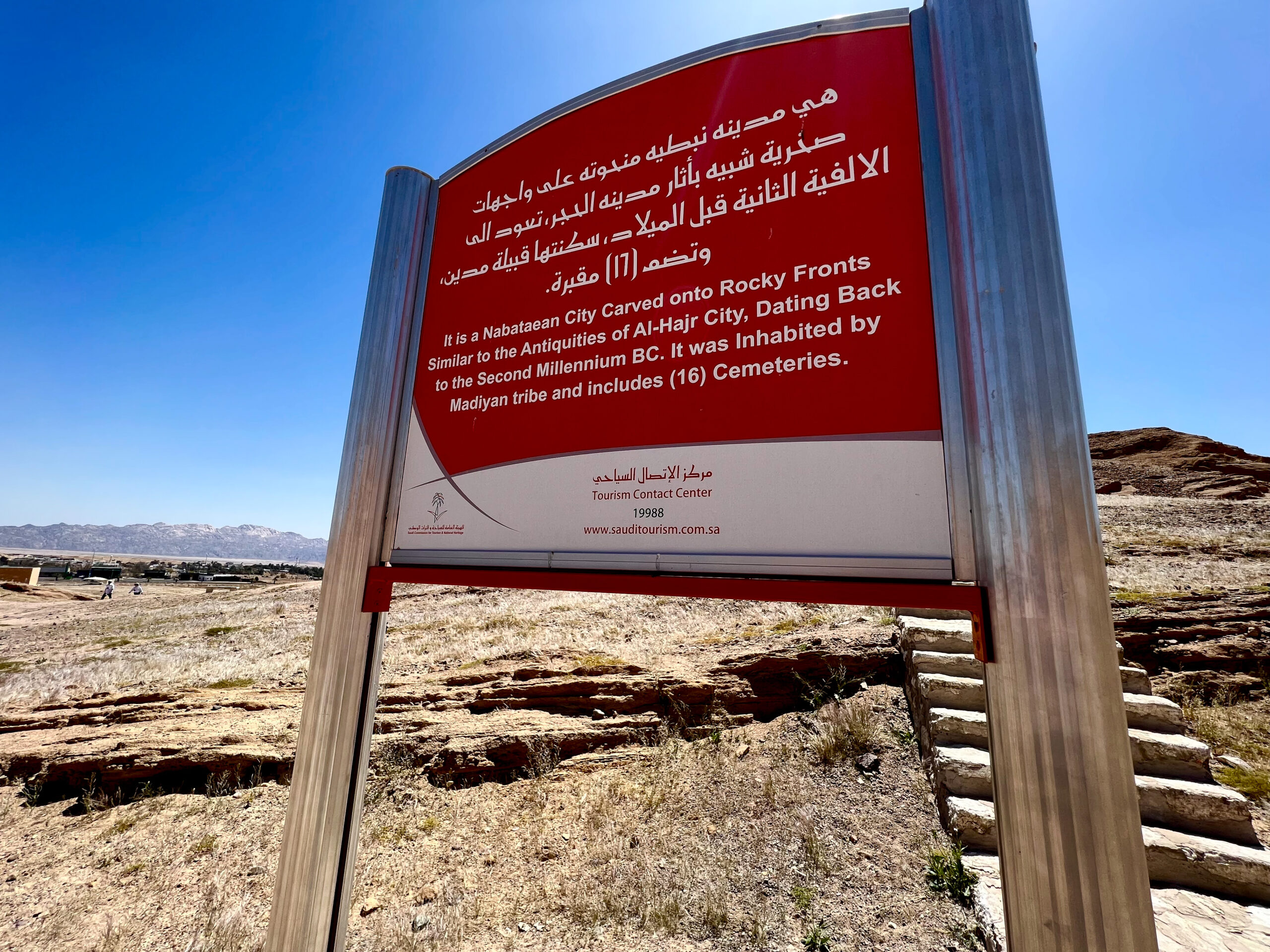
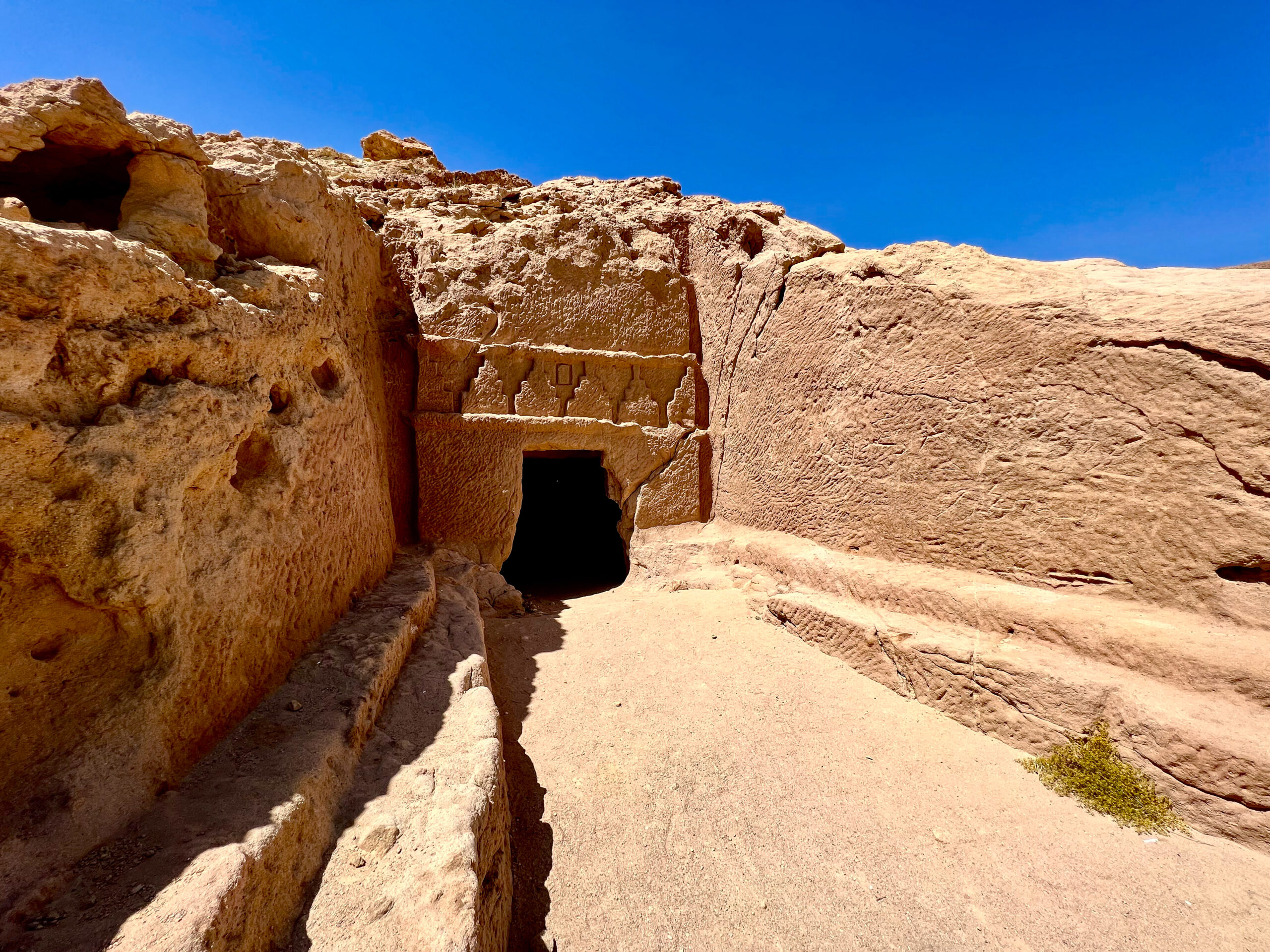
“Circles of Jethro”
The British explorer John Philby (1885-1960) explored northwest Saudi Arabia when he was alive and published a book, The Land of Midian discussing what he found.
Philby described climbing up to a site in or near Al-Bad that was known as the “Circles of Jethro,” where Jethro/Prophet Shuy’ab is said to have prayed. He wrote:
“From here my guide and I climbed up the cliff to visit the ‘circles of Jethro’ on the summit of Musalla ridge, from which we climbed down quite easily to our camp on the far side…A cairn marked the spot where Jethro is supposed to have prayed, and all round it are numerous circles…. From here, I had a magnificent view of the whole of the Midian mountain range, with Lauz [Jabal al-Lawz] and its sister peaks in the northeast and Maqla’a [Jabal Maqla] very little north of east.”
We have not yet located this site and there are no known pictures of what it may look like.
Other Midianite Remains
There are various ruins in northwestern Saudi Arabia, including the specific area of Al-Bad, that are fenced-in and identified as archaeological sites.
Below are pictures of some of the ruins that are believed to be Midianite:


It is important to remember that the Saudi government only very recently loosened restrictions on archaeological excavation. The country only held its first archaeology conference in October 2017, where the speakers emphasized that little digging has ever been done and that massive amounts of artifacts are expected to lie beneath the surface. They did not even discuss the time period of the Exodus.
Conclusion
There is a large amount of evidence of Jethro and Moses living in Midian, the land east of the Gulf of Aqaba. Midian is a key location in the narrative, as Mount Sinai was in or close to Midian.
Bibliography
[i] Charles Whittaker, “The Biblical Significance of Jabal Al Lawz” (Ph.D. diss., Louisiana Baptist University, 2003), 12-13.
[ii] Al-Bid: History and Archaeology. (2002). Riyadh, Saudi Arabia: Deputy Ministry of Antiquities and Museums. First noted by Charles Whittaker, The Biblical Significance of Jabal al Lawz. (2003).
[iii] Kerkeslager, Allen. “Jewish Pilgrimage and Jewish Identity.” Pilgrimage and Holy Space in Late Antique Egypt. Edited by David Frankfurter. Bill, NV, Leiden, The Netherlands. (1998).
[iv] Ibid., 200.
[v] “Mt. Sinai.” BASE Institute. http://www.baseinstitute.org/pages/mt_sinai/18
[vi] Williams, Larry. (1990). The Mountain of Moses: The Discovery of the Real Mount Sinai. Wyndwood Pr.
Josephus, Flavius. Josephus Complete Works - Ant. I.xv.1. Translated by William Whiston. (1960). Hendrickson Publishers, Inc. Peabody, MA.
Fritz, Glen. (2019). The Exodus Mysteries of Midian, Sinai, and Jabal al-Lawz. GeoTech, Vero Beach, FL.
Last updated May 18th, 2022.

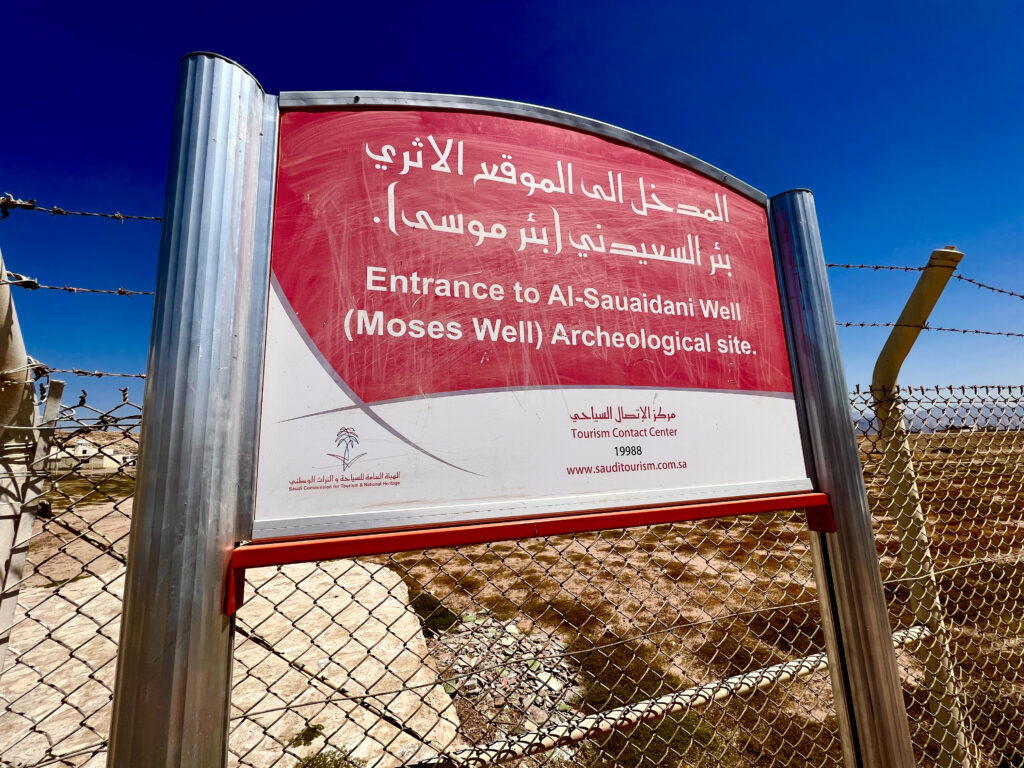
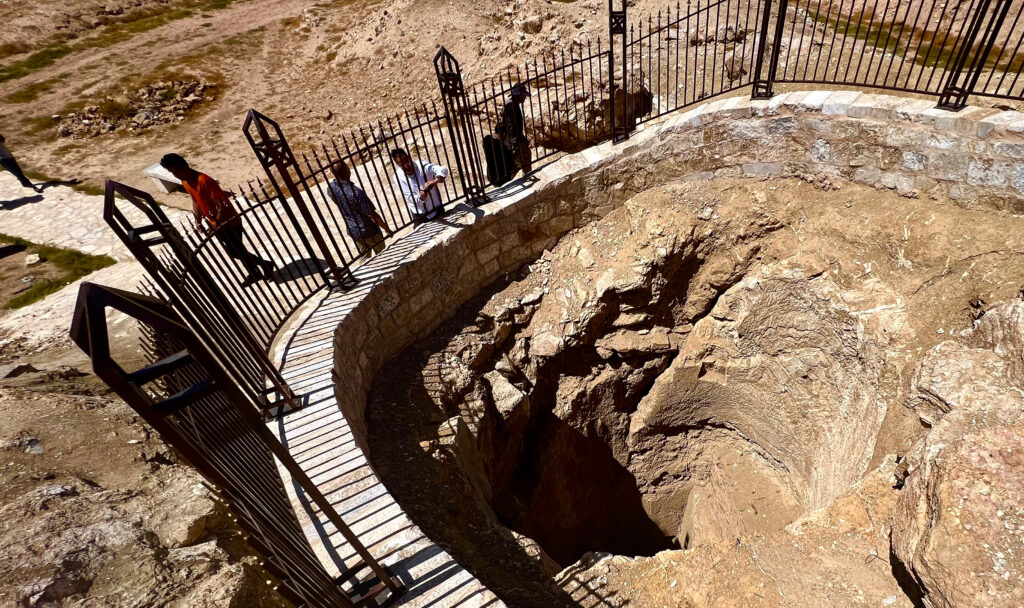
THE VOLCANO GOD OF MOSES
Yahweh the Volcano God
Yahweh the volcano god….here are some quotes on the subject….
Jacob Dunn has been published in the Journal for the Study of the Old Testament: A God of Volcanoes: Did Yahwism Take Root in Volcanic Ashes?
Exerts from paper abstract:
“This study combines the southern geographical placement of Yahweh’s sacred mountain in Midian with biblical descriptions of the theophany at Sinai-Horeb—descriptions which have prompted scholars to interpret the events at the ‘mountain of God’ as volcanic in nature. this study next advances an interdisciplinary approach and a new reformulation of the Midianite–Kenite hypothesis, combining geography, geology, and volcanology with the textual element that deals with ancient Midian and the Sinai-Horeb tradition. Finally, this study seeks to offer a scientific analysis of the texts, both poetic and narrative, which seem to indicate Sinai-Horeb was a volcanic mountain and pilgrimage site in northwest Saudi Arabia.”
In the NIV Achaeological Study Bible, Mount Sinai is said to be a volcano.
On page 96 of The Urantia Book Yahweh is said to be just one of hundreds of nature gods but with a volcano as its deity.
In ‘Moses and Monotheism’ by Sigmund Freud, Yahweh is said to be a volcano god.
In ‘Mount Sinai a Volcano’ by Charles beke, Mount Sinai is said to be a volcano.
In ‘The Invention of God’ by Bill Lauritzen, the role of volcanoes is highlighted in the establishment of ‘god’.
In ‘Mythology’s Last Gods’, William R.Harwood describes Yahweh as a volcano god.
In ‘The Christ Conspiracy’, Acharya S describes Yahweh as a volcano god.
In ‘The Woman’s Encyclopedia of Myths and Secrets by Barbara Walker, Yahweh is said to have been a volcano god.
In ‘The Masks of God Volume 3 Occidental Mythology’ by Joseph Campell, Yahweh is described as an Arabian volcano god.
In ‘The Jews: Story of a People’ by Howard Fast, Yahweh was described as a volcano.
In ‘Mass Psychology’, Sigmund Freud says Yahwey was a volcano god.
In ‘Atheism in Christianity’ by Ernst Block, Yahweh was said to be a volcano god.
In ‘The Oxford Companion to the Bible’ by M.Coogan and B.Metzger, Yahweh is described as a volcano god.
In ‘Psychoanalysis and Religios Experience’ by W.W.Meissner, Yahweh is described as a volcano god.
In ‘All About Adam and Eve’ by Robert Gillooly, Yahweh is described as a volcano god.
In ‘The Genesis of Misconception’ by Paul John, Yahweh is described as a volcano god.
In ‘The Autobiography of God’ by William Harwood, Yahweh is described as an extinct volcano god.
In ‘Adieu to God’ by Michael Power, Yahweh is described as originating from a volcano god.
In ‘Freud and Moses’ by Emauel Rice, Yahweh is described as a volcano god.
In ‘Moses the Egyptian’ by Jan Assman, Yahweh is described as a volcanic demon.
In ‘Eschatology in the old Testament’ by Donald E. Gowan, Yahweh is described as a volcano or storm god.
In ‘Water for a thirsty land’ by H.Gunkel and K.C.Hanson, Yahweh is described as a volcanic deity.
In ‘The Divine Invasion’ by Philip Dick, Yahweh is described as probably a volcanic deity.
Great info. I will visit the area myself in December – can’t wait 🙂
I have pictures of the Circles of Jethro, and am happy to send them to you (just need an email address).
Best wishes,
Jake